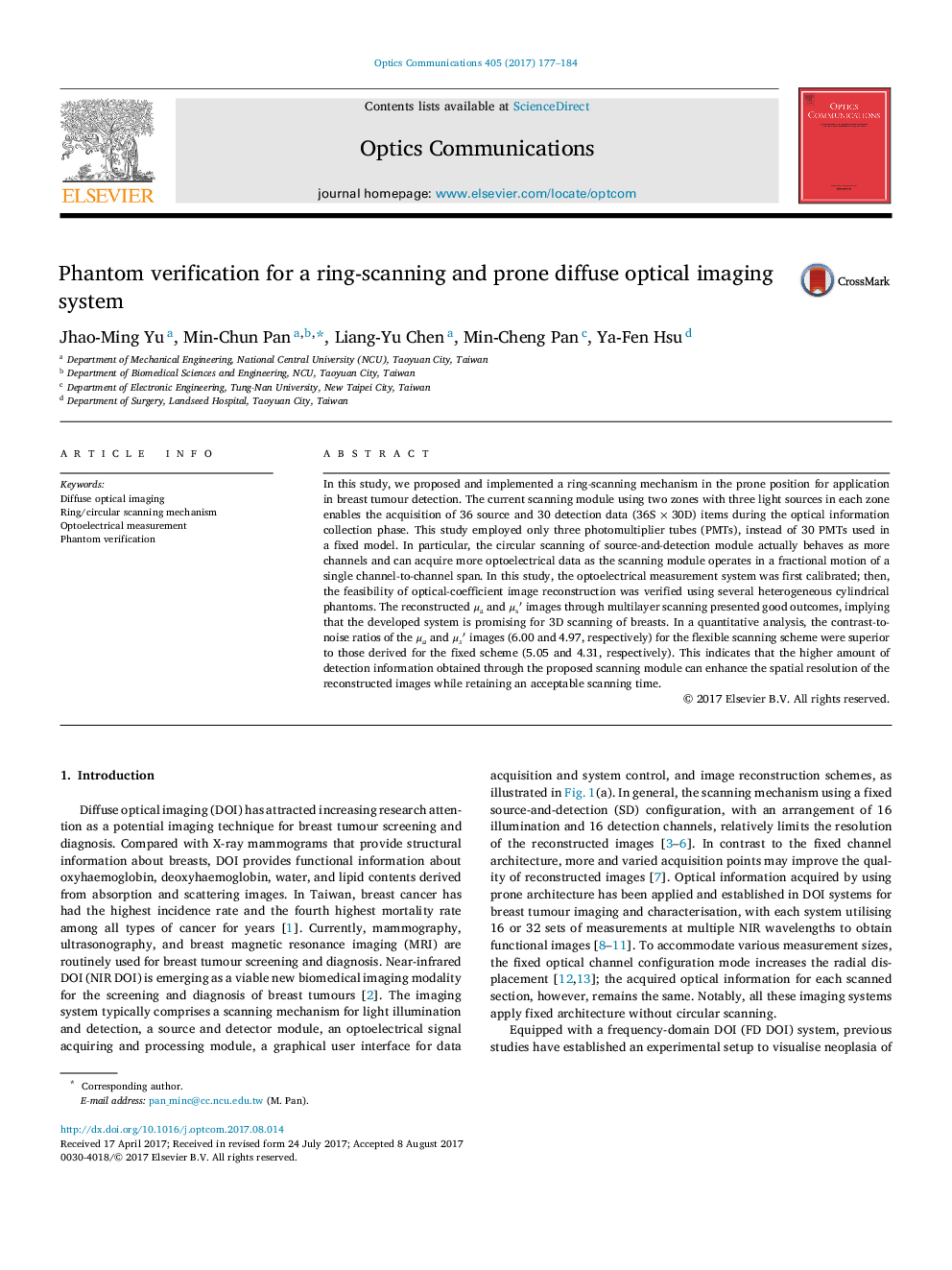| Article ID | Journal | Published Year | Pages | File Type |
|---|---|---|---|---|
| 5449197 | Optics Communications | 2017 | 8 Pages |
Abstract
In this study, we proposed and implemented a ring-scanning mechanism in the prone position for application in breast tumour detection. The current scanning module using two zones with three light sources in each zone enables the acquisition of 36 source and 30 detection data (36S à 30D) items during the optical information collection phase. This study employed only three photomultiplier tubes (PMTs), instead of 30 PMTs used in a fixed model. In particular, the circular scanning of source-and-detection module actually behaves as more channels and can acquire more optoelectrical data as the scanning module operates in a fractional motion of a single channel-to-channel span. In this study, the optoelectrical measurement system was first calibrated; then, the feasibility of optical-coefficient image reconstruction was verified using several heterogeneous cylindrical phantoms. The reconstructed μa and μsⲠimages through multilayer scanning presented good outcomes, implying that the developed system is promising for 3D scanning of breasts. In a quantitative analysis, the contrast-to-noise ratios of the μa and μsⲠimages (6.00 and 4.97, respectively) for the flexible scanning scheme were superior to those derived for the fixed scheme (5.05 and 4.31, respectively). This indicates that the higher amount of detection information obtained through the proposed scanning module can enhance the spatial resolution of the reconstructed images while retaining an acceptable scanning time.
Keywords
Related Topics
Physical Sciences and Engineering
Materials Science
Electronic, Optical and Magnetic Materials
Authors
Jhao-Ming Yu, Min-Chun Pan, Liang-Yu Chen, Min-Cheng Pan, Ya-Fen Hsu,
